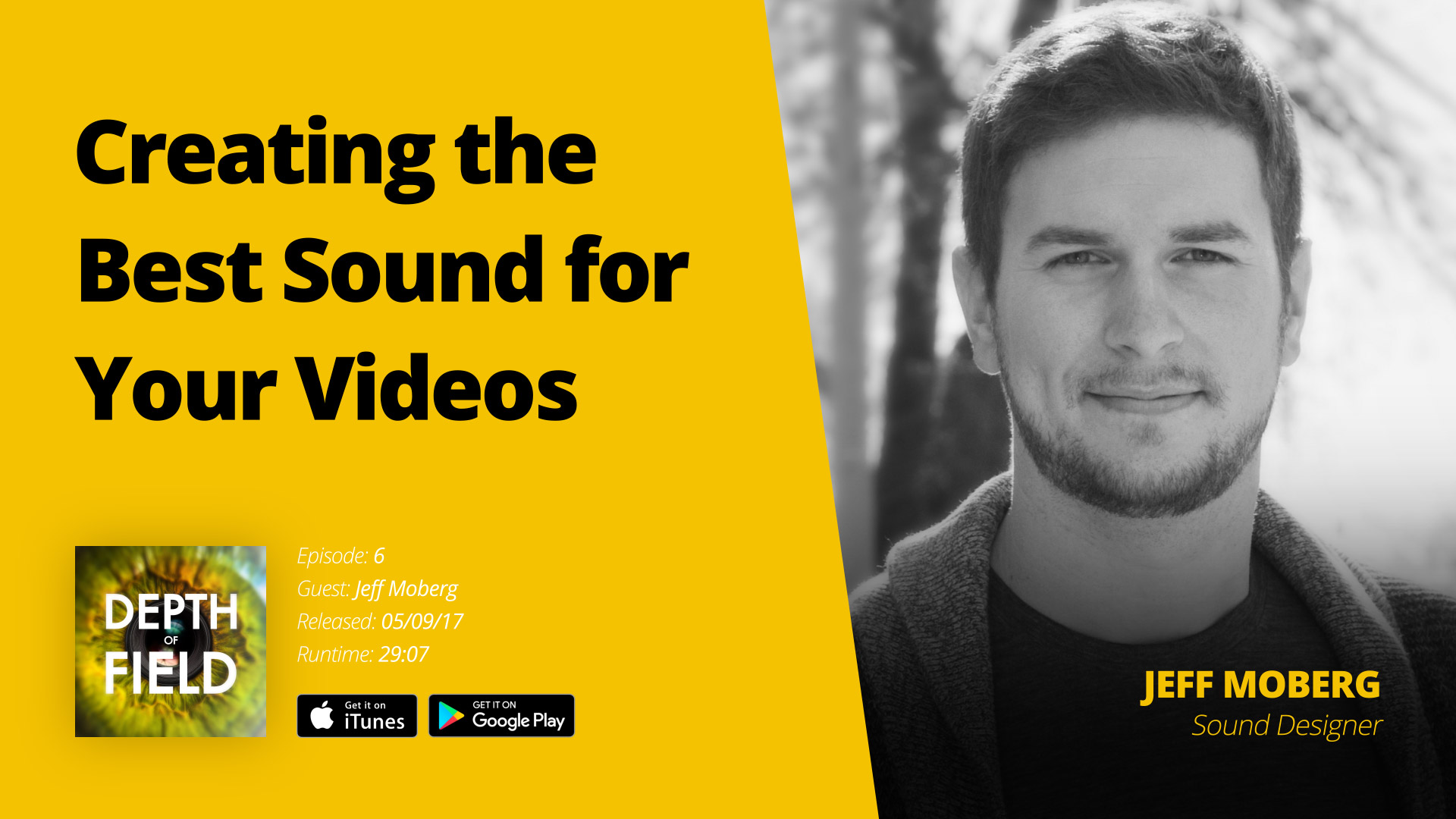
Practical tips & tricks for getting better audio in your productions with a professional sound designer and music maker who’s also recorded dialogue for AAA game titles.
Related Links
Welcome
Adrian: Hey, guys. I’m here with Jeff Moberg who is a sound designer and music-maker based in Toronto. Jeff, thanks so much for coming on, man.
Jeff: Yeah. Thanks for having me. I really appreciate it.
Adrian: This is awesome. So, it doesn’t have to be a secret. We worked together on a lot of motion graphics projects, and there’s a lot of motion graphics in your portfolio. It seems like you’ve almost become a go-to for that type of work. How do you think that ended up happening?
Jeff: You know what? I’ve always really enjoyed working on animations and motions graphics videos. In terms of sound, it’s really open to creativity, and you can go way outside the box or keep it realistic. I just like that creative freedom that comes with it.
Adrian: Yeah, that’s so true. There’s more abstract things going on and all that.
Jeff: Yeah, exactly. Growing up with a brother that is in the animation field and is a 3D artist, I’ve always had a deep appreciation for what goes into it. So, I really enjoy it.
Adrian: Well, let’s take a few steps back and just hear how you got started in audio in general, how that whole career started for you.
Jeff: It’s funny. I kind of stumbled into it, actually. I had always been involved in music in some way, and throughout high school I was always playing in different bands and stuff like that, but I was fortunate to have parents that were always very encouraging and supportive of … they would always push us to do exactly what we wanted to do. So, coming out of high school, I really wanted to record bands. I wanted to work in a studio and record albums and mix music and stuff like that. So, I ended up going to a college in Ottawa to study that, and during that time, we spent one week during the curriculum that was focused on film sound, and that was an eye opener for me. I didn’t even know, at that point, that foley was a thing and replacing dialogue and stuff like that. So, that was the time where I stepped back and said, “This is what I wanna do, and this is where I wanna go.” So, after that year, I moved to Toronto and studied audio post-production and that lead to an internship and it just spiraled out from there.
Adrian: What type of work was that? Was that already getting into motion graphics work, or was it more live action stuff?
Jeff: No, it was more commercial based at that point. So, we were recording a lot of voice overs, mixing commercials, working on TV shows and cleaning up audio and stuff like that. That’s where I got started in the post-production field, and then it branched out from there.
Adrian: Did you end up targeting motion graphics customers, or did you start telling people, “Hey, let me add sound to your motion graphics pieces,” or how did you get into becoming such a force in that style?
Jeff: In our field, and I think in any creative field for that matter, I think there’s a general consensus that we all just wanna make cool stuff. We wanna make something fun. We wanna make something engaging that we enjoy doing. So, when I first started out, it was really just reaching out to different studios and finding videos that I found really impressive and really engaging and reaching out and just saying, “Here’s what I do, and I think we can work together and make something cool.” I was fortunate that a few studios have reached out. That’s how it started.
Adrian: That’s awesome. I remember when I was looking for a sound designer, I think you were one of the first people I came across on Vimeo, and you just seemed like the go-to guy, and I have to give you props; I think you are the perfect freelancer in the sense that working with you will never be a let down. You just hit the mark every time and the first time. That’s such a good reputation to have, and I know that helps you land more work because you know what’s up and you’re executing all the time.
Jeff: Thanks, man. I really appreciate that.
The Art of Sound Design
Adrian: How would you describe the process for people that maybe aren’t familiar with the type of motion graphic work and the sounds? Maybe they haven’t noticed the sounds in the way that you do. How would you describe that process when you’re given an animation that has no sound and then you have to start giving it all that life? What’s that process like?
Jeff: I think, first and foremost, is to take a step back and think about what the message is. What is the client trying to convey to the audience? And then from there, you can decide what the sound is gonna bring to the table to actually support that and support the visuals that are there. Usually I’ll take a look at the animatic or the rough cut or whatever stage the video is at, and then decide is there sounds that I need to go out and record? Is there foley that needs to be done? Is it gonna be sound effects driven? Is it gonna be music driven? You can narrow it down from there and doing some tests and seeing what works.
Adrian: I assume you’ve been doing it long enough that you have a pretty good understanding in terms of all of your existing sounds and library and the way that they’re organized. Was that something that was tricky to do, and is that always changing, or at this point do you have a pretty full library of sounds that you can lean back on that you just know where they are?
Jeff: Yeah. I mean, I have a library here that I’ve build up through the years and field recordings that I’ve cataloged, and it’s great to have on-hand for different projects, but it’s always nice to introduce new sounds into the mix as well. The same goes for music. There’s so many great companies that are popping up that are developing state of the art virtual instruments and sound design tools that twist and morph audio in ways that we haven’t heard before. It’s always good to stay on top of it and keep fresh.
Adrian: And all these spots you’re giving sounds to technology, which is really interesting because those sounds just don’t exist. That was an interesting thing. I remember working with you at the beginning and watching your spots as you would give sound to data moving or messages being sent but not a text message but just radio waves and things like that, which is super abstract but it’s really helpful in terms of feeling what’s going on in spots.
Jeff: Yeah, for sure.
Adrian: On the opposite end of the spectrum, you’re also working … you mentioned doing work on A-list video games and recording character sounds, so I’d love to just give people a glimpse. I know you can’t reveal studios and the game titles, but just giving a glimpse into what it’s like in that process because I know that’s totally different than working with a studio on motion graphics because there’s just a whole different process involved.
Jeff: Yeah, for sure. It’s definitely a different process. I would say it’s a little less linear than working on something like a commercial or an online video or something like that, but one thing I’m always blown away with is the actors on some of these games. It’s unbelievable to watch. It’ll be a Monday morning, and no one in the room has had coffee, and you tell them, “Okay, you’re being blown up.” And boom. They’re in it. It’s unbelievable to watch. There’s a lot of lines, and it’s usually a lot of fun.
Adrian: That’s cool. Are you going in and setting up the microphone and just making sure everything sounds perfect and somebody else is directing the actors?
Jeff: Yeah, pretty much. Watching the levels so that there’s no distortion or extra sounds in the sound booth that affect the performance and just generally making sure it’s a nice clean recording that they can work with once they get the files back on their end.
Adrian: Right. Okay. So, let’s assume there’s people listening that don’t have a lot of experience doing sound design and they’re trying to add some flavor. They’re not able to outsource or hire somebody like you, but what kind of advice would you give to somebody who … like, in a wide variety of projects, but what general advice in terms of sound design and giving the audio some life could you give, just some basic pointers?
Jeff: I mean, if you’re talking about bringing a scene to life, I would say just think about the layers that make up a scene. For instance, if you’re talking about an outdoor scene set at a park, there’s gonna be some subtle wind noise. There’s gonna be grass blowing, people walking by as their kid’s playing in the distance, is there a dog barking? All these things add up to collectively make a scene a whole. Now, if you wanna alter the mood of the scene, let’s say it’s a horror movie that’s set in a park. Maybe you wanna strip away all the life and just have a cold wind or something that lends to the storyline. So, I would just say think about the layers that are involved in a scene and the message that you want to convey with it.
Sound Design Resources
Adrian: Yeah, totally. Where would somebody who doesn’t have any sound effects right now, where would be their first stepping point? I remember when I was starting, I was using a website called freesound.org where people just upload recorded sounds. Would you recommend something different or anything else?
Jeff: I mean yeah, that’s what’s good about the time we’re in right now is recording devices, whether it be for video, photography, or audio or otherwise, they’re so readily available to us and they’re easy to get your hands on, and you start to see resources like that pop up. One site I really like is called sonos.com. They’ve done a great job of curating independent sound libraries from all over the world. So, if you’re looking for something super specific, you can browse through there and chances are you’ll find something that’ll work. Otherwise, I would just say hire a sound designer, but you know, just putting that out there.
Adrian: Have you heard of motionsound.io?
Jeff: Yep.
Adrian: A friend of mine recorded those, and there’s a lot of good sounds in there, too, for motions graphics specifically.
Jeff: It’s a great resource to have in your arsenal. Apart from that, if you really wanna dive into it, portable recorders are fairly affordable, and it’d be great to get out there and record. Why not? Get your own flavor on it.
Writing & Recording Music
Adrian: So, you have a background in music, which makes a lot of sense being an audio person. How has that shaped how you work as a sound designer, and how has that balance been because you’re obviously still pursuing music and you record music? You have some cool samples on your website. So, what’s that like doing both in terms of maintaining that creative passion and still working on that type of stuff?
Jeff: Well, I mean one of the benefits of doing both—and coming from a musical background—is that when you approach a new sound design project, you’re thinking about it in a musical way. So, when I’m designing sound effects, I’m always thinking about what the music track is doing and vice versa as well. When I’m writing a music track, I’m always thinking about what the sound effects are doing in certain points and trying to think about how they can work together. So, when I’m designing sounds, I’m always trying to work in melodic elements or different instruments to try to create sounds so that they sit well with the music and the two can form a cohesive whole.
Adrian: So, what is your inspiration when you do write music or when you were writing personal stuff? What was the inspiration behind it?
Jeff: I would say a lot of the inspiration actually comes from the video itself, to be honest. When you watch back a new project, it’s figuring out is there certain cues that need to be hit? Is there a certain storyline that the client wants the music to accentuate? And different things like that. I would say a lot of the inspiration actually comes from the video, and I let that dictate where the music goes from there.
Adrian: One thing I really respect about working with you is the simplicity of your rates because I’m definitely an advocate for flat rates and things that are just easy to keep consistent in terms of the deliverables because I know that’s not common for a lot of creative service people.
Jeff: Right. I know a lot of people that bill out in all sorts of ways, whether it be hourly or day rates or flat rates. I think it’s whatever you’re most comfortable with, but I think a big part of being a freelancer is being easy to work with. If you can simplify things for your client and quote with a number you’re confident you can deliver within, then it just speeds the whole process up and simplifies things for both you and the client, and you can move onto the more creative, fun stuff.
Adrian: Well, one thing … the reason that I stray away from the day rate structure is that you don’t always know what you can accomplish in a day, and especially the client doesn’t always know. You have a better idea of what you can do in a day, but the client might not actually have a good idea, and it almost puts the pressure on them to figure out what can be done. Whereas when you’re giving a flat rate, you’re telling me that you can deliver that sale. You can do the project and you’re sure that you’ll get it done and you’ll still make a profit on it, which is encouraging.
Jeff: Yeah, for sure. I mean, that comes down to knowing your process well enough so that you can gauge how much time you need to deliver something, but it definitely varies by project. I can understand why you would wanna take a day rate or an hourly rate. If the client’s looking for a super specific sound or maybe the project’s super abstract and you need to build in some time for experimentation, I can totally understand why someone would wanna a day rate or an hourly rate to cover their bases so that they’re not spending a month on something that they thought would take a week. It definitely varies by the project.
Life in the Audio Industry
Adrian: How would you describe the sound audio industry in general? Do you notice competitors or do you feel like there’s just a lot of friendly-natured people? It seems like that’s how I would describe the motion graphics community is there’s a lot of friendly people. Is the sound design industry any different or what’s your experience been?
Jeff: Yeah. I would say it’s really similar, actually, and it’s one of the things I love about the industry is how tight everybody is. You see on Twitter and Vimeo every day where someone puts out an awesome new project, and there’s almost a virtual high five from the industry where people are genuinely appreciative of it and curious about techniques and willing to share and learn from each other. I think it’s really similar in the sound industry where … I have a group of people that I work with pretty regularly, and people that I look up to where we’ll bounce ideas off each other and send each other projects and say, “What do you think about this mix? Is there something I can do differently?” I think it’s really important to share ideas and learn from each other and help the industry grow, you know?
Adrian: Yeah. Out of curiosity, have you ever sold stock music? That’s become so popular. Have you ever created a track and then sold it on a site like Premiumbeat or something like that?
Jeff: You know what? When I first started out, I definitely explored that option, and I realized pretty quickly that I didn’t really enjoy it.
Adrian: What bothered you about it?
Jeff: There was just something about randomly writing a track and putting it out there into the abyss and hoping it sells and not really having control over where it goes that I just didn’t really enjoy. I think for me personally, I enjoy the challenge of [inaudible 00:15:49] and taking a direction and putting my own flavor on it that I didn’t find that kind of satisfaction in writing stock music. That’s pretty much it.
Adrian: Well, it makes sense based on what you said about being inspired by the visuals because when you’re writing a music track like that, you’re trying to give a bunch of feeling and you have no context to what or how it’s gonna be used. You’re trying to guess a need and then create for that, opposed to seeing the need and then creating a solution.
Jeff: Yeah, exactly.
Motion Graphics vs. Commercial Projects
Adrian: That makes a lot of sense. We talked a lot about motion graphics and working in that arena, but how would you describe the difference when you compare the process of motion graphics to commercial? What are the key differences in the workflow?
Jeff: To be honest, I would say they’re both pretty similar, and actually a lot of the commercials that I work on are animations and motion graphics and 3D videos, so the two do go hand in hand.
Adrian: Yeah, that makes sense.
Jeff: One thing I would say I see more commonly with motion graphics and animators is that a lot of the time you end up working alongside the animator. In an ideal world as a composer and a sound designer, we would get a final cut or a locked edit where nothing changes, but with animations and 3D videos, things are constantly being refined and transitions are being shifted here and there and tweaked. So, when you’re writing a music track or creating sound effects, you have to be mindful that a shot could be removed or an edit could change at any point and create a track that’s flexible in that sense, if that makes any sense.
Adrian: How has it been managing your freelance life in terms of work life balance and just managing all of your clients and the whole business side of freelance? How has that been for you?
Jeff: It’s been both satisfying and challenging at the same time. There was a bit of a learning curve there. I would say when you do something that you really enjoy or you do something that you love for a living, it’s very easy to let it take over. So, it took a long time to get that work life balance in check. When you first start out as a freelancer, it’s absolutely terrifying. You don’t know where the next project is gonna come from and you’ve got rent to pay and bills to pay and so on. When you take a step back and realize that you’ve carved your own little pocket in the industry and things have become steady and you have that balance of the business side of things and the creative side of things, it’s pretty awesome, and it’s something to be proud of. It’s satisfying.
Adrian: So, you work with, I assume, a wide variety of clients. You have a lot of studios listed on your website. Is there a wide variety of working relationships? For instance, when I’m sending you an animation, I don’t really give you direction because I trust your creativity and you always nail it. Is that similar to other people or are they giving you a direction and is there more of a process in figuring out the sound, or is it normally just kind of of a, “Hey, here’s a video and put some sounds on it.”
Jeff: I mean, it’s different for each project, and sometimes you have full creative freedom and other times there’s a brief that you have to stick to that’s been put together by a full creative team and stuff like that, but there’s definitely pros and cons to both. It’s nice to have creative freedom and be able to experiment with certain things and play around with it and find a groove, but sometimes it’s good to have a challenge where it’s like, “This is what we need, and this is what we’re looking for and find a way to make it happen.”
Jeff’s Technical Advice
Adrian: Let’s see if we can give our listeners a technical tip that … let’s say, up until now, they’ve ignored the audio side. They slap on some stock music and they don’t adjust their voice over at all, which I have been guilty of when I first started doing tutorials. What is some easy things they can do with no real experience to just make their audio sound better, even if it’s just voice over and music?
Jeff: I would just say just make sure they’re balanced and that you can clearly understand what the voice over is saying and the music isn’t drowning it out. One thing that goes a long way for that is just making sure that you’re starting with a high quality file. If you’re working with this MP3 that the voice over artist recorded on their phone in a garage, it’s just not gonna translate. It’s one of those things where—video and audio—it’s 50% and 50%. If you have one that’s bad and one that’s good, it’s not gonna translate to the audience. You can have a blockbuster movie that was filmed with hundreds of thousands of dollars of equipment. If the audio is poorly recorded and poorly mixed, you’re gonna lose the audience regardless. So, I would just say make sure you’re starting with the highest quality possible, and then just make sure that the voice over and the music are balanced.
Favorite Types of Music
Adrian: Cool. Well, speaking of music. I’m gonna put you on the spot and ask you what your favorite type of music is now and any artists if you feel like listing them.
Jeff: That is a loaded question.
Adrian: The impossible question.
Jeff: I’ll listen to pretty much anything except country. Just not a fan of the twang. I listen to a lot of electronic, but I’ll listen to anything from jazz to indie, folk, rock, metal, 90s hip hop. I bounce around depending on the day.
Adrian: I’m the same way. Every day I love blasting music when I’m in the shower, and I’ll switch genres almost every day between blues, jazz, or electronica or rock. There’s just so much good stuff out there.
Jeff: Yeah, exactly. I mean, oddly enough, I don’t listen to a lot of jazz but my all-time favorite band is a jazz band called Snarky Puppy. I’ve seen them live so many times and it’s always just amazing to see. Another band I really like is an electronic band. I won’t say because I know we’re trying to keep this PG, but they’re called Holy F. I highly recommend checking them out.
Sound Design Inspiration
Adrian: Is there anywhere specific that you get inspiration from for the sound design aspect of your work? Do you visit some people that you look up to or do you watch other videos or how do you get inspired?
Jeff: For sure. I mean, seeing videos and whether it’s a behind the scenes video on how something was done or how sound was created for a feature film or something like that is always inspiring, and it gives you an insight into someone else’s mindset and outlook on sound and that sort of thing. I find hanging out with other creatives makes a huge impact into how you think about what you’re doing, whether it’s musicians or other sound designers or designers, illustrators, animators, all that sort of thing. We all have personal projects and idea that we wanna act on. I think sitting down and talking about those ideas is huge, and you end up coming back and your wheels are turning, and to have those brain storm sessions, it kind of opens up your mind and makes you think differently and how to approach things differently and that can translate into how I approach the next sound design project and things like that.
Adrian: What’s something you notice about those people you’re looking up to that they do? What’s the reason you’re looking up to them? What do you see in their work?
Jeff: I think it’s just the habit of holding yourself to a higher standard and doing more and doing it better, making sure it’s absolutely perfectly.
Adrian: In what aspect? Like, you can tell they custom made these sounds for these environments type of a thing?
Jeff: Yeah.
Adrian: Okay.
Jeff: I mean, it’s diving into the details and thinking differently and taking different approaches to making sounds and creating these sounds no one’s ever heard before. They’re fresh and new and unique, you know?
Adrian: Yeah. They’re not using stock sounds. They’re custom making the stuff.
Jeff: Yeah, exactly. And it’s using the tools that you have to come up with new ways of creating sounds. It’s learning those new techniques and inventing techniques to come up with these.
Adrian: Absolutely. I mean, it’s insane how many new techniques and ways to pull of that technique there can be. So, absolutely. I see that all the time in people’s work.
Jeff: Yeah, exactly.
Jeff’s Practical Advice
Adrian: All right, cool. well, let’s go ahead and start wrapping it up, and before we do that, one thing I like to ask every visitor is what’s something our listeners should focus on to improve this week? We did cover some really nice simple things that they can do to make their audio better, so maybe departing from a technical piece of advice, but just something that might make them a better freelancer or might help them pursue better sound or just something that’s just a practical tip you can give them.
Jeff: I would say, dialing back to what we were talking about before, is just always be experimenting and making time to learn new techniques and also surround yourself with people you admire. Reach out, whether it’s over Twitter or Facebook or going out for a coffee or beer or whatever, and don’t be afraid to ask questions and seek out the feedback that you need that will take your work to the next level.
Adrian: Awesome. Yeah, don’t get too complacent in your style.
Jeff: Yeah, exactly. The moment you find yourself in a routine, that’s when you stop learning, and when you stop learning, that’s when you’re at a standstill and you fall behind. I guess the challenge would be to put the effort in and dive into the details and take the time you need to make your work something you can be proud of.
Wrap Up
Adrian: Love that. All right. Cool, man. Well, before I let you go, do you have any sites or social media you wanna plug where people can just check out your work or just get in touch with you?
Jeff: Yeah, for sure. My website is jeffmoberg.tv, and you can always contact me through there. You can find me on Twitter and other social media at jm_sound_music.
Adrian: Awesome. So, we’ll put those links in the show notes as well as the recommended sound effects sites so you guys can check out. Thanks so much for coming on the show, man. That was awesome.
Jeff: No problem at all. Thanks for having me.


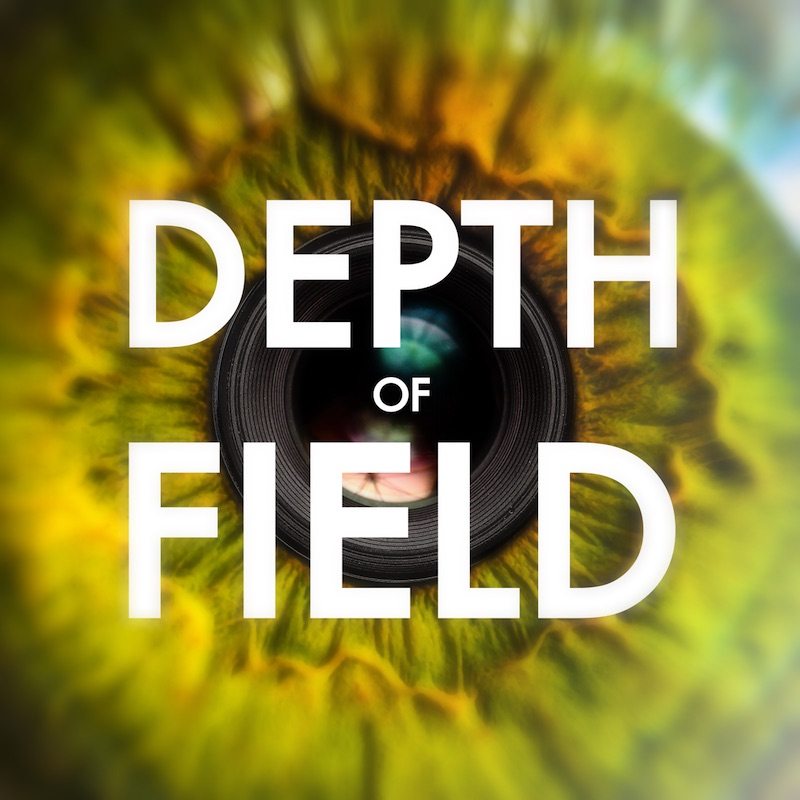


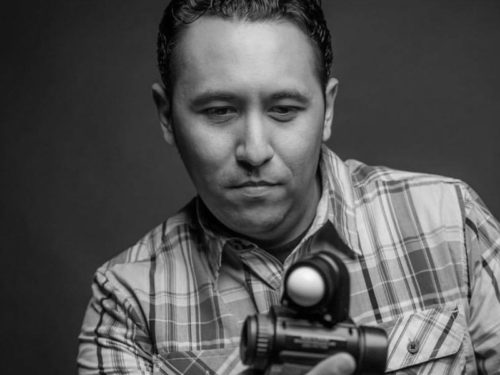
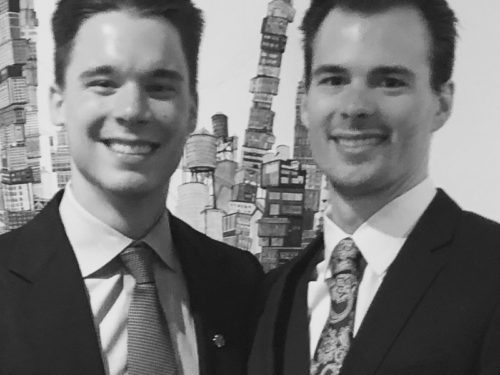
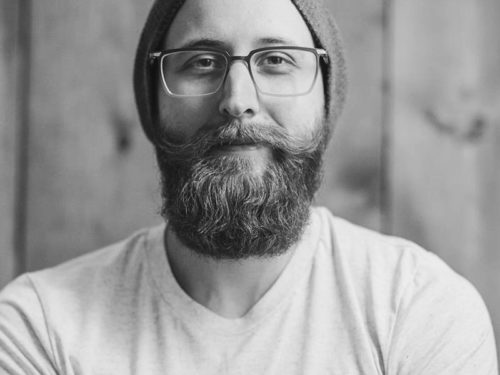

0 Comments